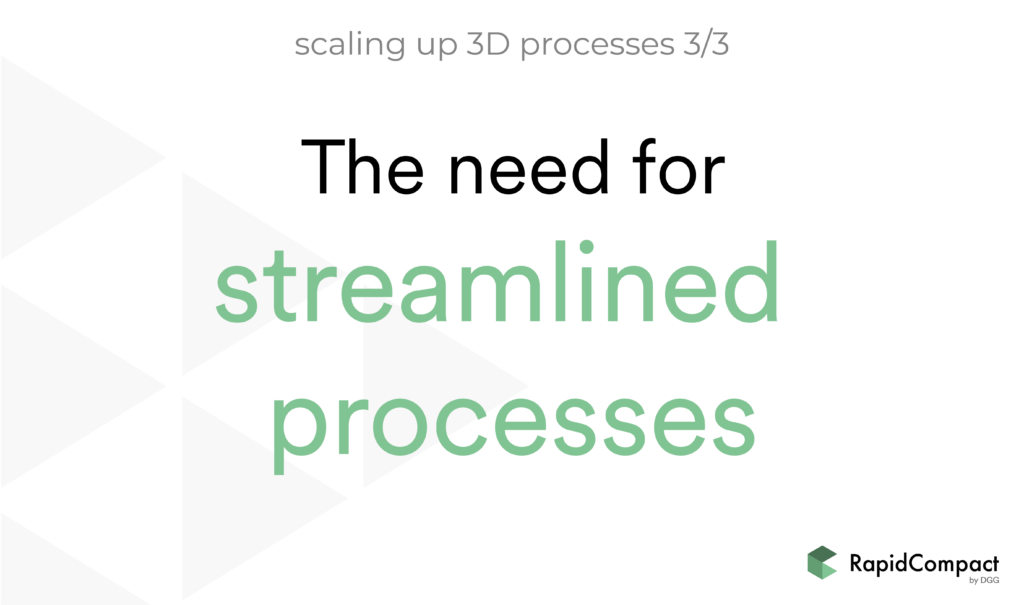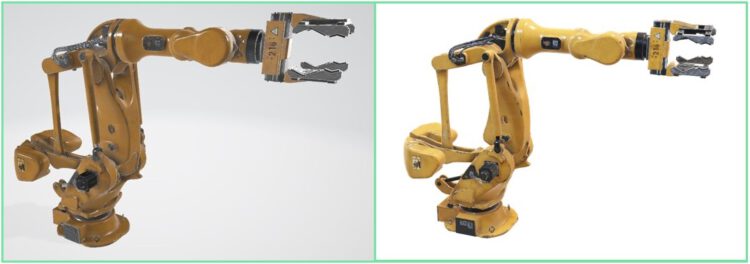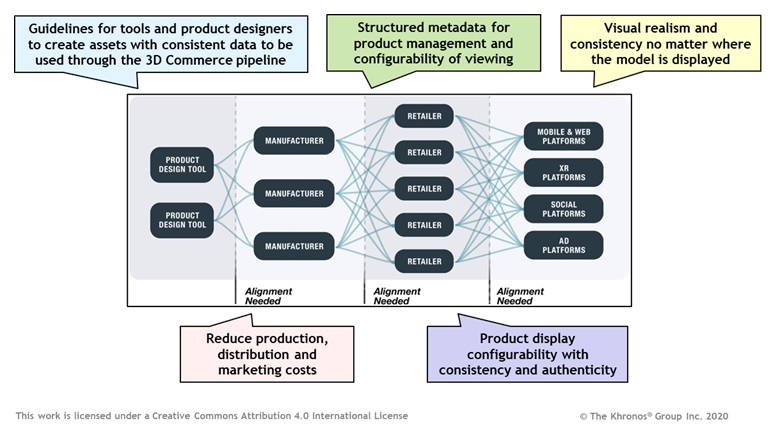
In the first two parts of the series, we looked at the benefits of 3D in e-commerce and the importance of efficient delivery formats, offering a good overview over the most recent developments in 3D technologies and mainstream applications. In the third instalment, we take a look at the current challenges focusing on how standardization, streamlined 3D processes and collaboration can help the industry thrive.
In 2020, we are facing a new challenge: the search for an efficient 3D workflow. With so many different participants in the market, each company builds their own process for the creation, preparation and final delivery of 3D data to various platforms making 3D processes barely streamlined. Let’s have a look at the following problems:
Variety of interfaces
The interfaces are manifold! For example, looking at content creation, there are three main sources a digital 3D model can come from:
Having many potential origins of content means that an enterprise 3D process potentially receives a number of different inputs, from internal and external sources, which vary in terms of quality and in workflow used to prepare the content. Tools to work on 3D content are manifold too: within each specific step of the process, artists use a variety of tools to prepare the models for delivery. Each studio, agency or department might use a slightly different tool chain and workflow. Handing over such content to the next step can lead to large overheads. Lastly, there is an application and a device to run the final visualization on, which has its own requirements for the acceptable content. A lack of alignment between all involved parties makes it difficult to deliver 3D content and to create efficient and affordable workflows. Organizing and standardizing the content workflow is clearly a challenge for every company.
Manual workload
Even large retailers and e-commerce platforms still need to involve external studios and agencies to help with 3D pipelines – creating and preparing 3D content for photorealistic renderings and final deployment on real-time applications. These services typically involve a lot of costly manual work involving different 3D artists, which are not only needed for 3D production, but for quality assurance as well. This creates overhead and a risk of having to only rely on external parties. Retailers need to hire 3D experts and people with a profile in 3D to mitigate the risk and adjust overhead.
Today, these workflows still require a lot of manual work. Cost constraints and the limited number of 3D artists available hold back growth. Scaling up 3D pipelines without automation is impossible. It simply requires too much time and resources. Especially here, workflows and automated solutions like RapidCompact come into play. We will discuss these in the latter part of the article.
Lack of consistency
Another important aspect in this is the current lack of consistency. Consistency can be understood in two ways:
Both aspects need to be understood and acted upon. Only then 3D production will become affordable and 3D applications useful and successful in mainstream use-cases, like e-commerce.

To reach alignment and collaboration, more than 70 industry leading companies have gathered in the 3D Commerce Working Group (WG) of the Khronos Group, a consortium for standardization in the field of 3D graphics. This poses an important step in the development towards streamlined 3D processes.
Established in April 2019, the 3D Commerce WG is “working together to build industry consensus on what standardization activities are most urgently required for ubiquitous 3D Commerce”. The work is divided into four task sub-groups (TSGs), each dedicated to a specific topic:
Among the participating companies are Autodesk, Amazon, Google, Microsoft, Facebook, Shopify, IKEA and many more, representing different parties in the 3D commerce value creation chain. DGG is taking an active role in this effort with our CTO Max as co-chair of the Asset Creation TSG.
The graphic below highlights the problems we have described above. A lot of interrelations: many different parties are involved in the entire process of creating preparing and deploying 3D content. Each TSG mentions consistency as part of their goal.

As the Working Group’s chair Shrenik Sadalgi, Director of Next at Wayfair, says:
“As we continue to transform the way people shop for their homes, we believe that 3D will be ubiquitous in the coming years and that it is imperative to standardize 3D content so it can be exchanged effectively and experienced consistently.”
But, how can standardization solve the problems described above? Looking at each aspect separately we can summarize the following:
To make interfaces less cumbersome the industry needs to align and speak one language. Standards are a fantastic way of facilitating clear and unambiguous communication. Further, easily accessible resources can educate the market and support companies in building their own infrastructure. They also help tool vendors to create more usable tools, which are (cost-)efficient to work with and able to serve a larger client base at the same time, thanks to unified interfaces.
Creating a benchmark by introducing standard workflows, like it is done in the Asset Creation Guidelines of the 3D Commerce WG, helps tool providers to identify problems. By defining precise requirements for input, process and output, the development of automated solutions gets easier and software companies can focus their effort on the problems that really matter.
By certifying 3D viewers that fulfil a benchmark of requirements, it is possible to reach consistent rendering results across all platforms. Of course, the 3D models that should be deployed also need to satisfy certain quality. For this, guidance in the model preparation process can push the advancement of 3D pipelines – here, the Asset Creation Guidelines are a good example. On the rendering side, Khronos has already made a great effort as well with the creation of a glTF sample viewer. Consistent 3D model production is the cornerstone of a scalable system because only with consistent processes QA can also be automated.
RapidCompact already supports the latest Khronos standards. It is important to enable users to be aligned with the rest of the industry. This way, scalable 3D processes can be created; the adoption of 3D technology becomes easier, and affordable for companies of all sizes.
Currently, the challenges of bringing 3D technology to mainstream applications, like the e-commerce, hold back a breakthrough. However, a large group of industry–leading companies is tackling them, bringing in expertise from all relevant parts of the value chain, working together on streamlining 3D processes. With the definition of standards and the development of smart solutions, the industry can overcome these challenges and will soon blossom. My personal assumption is that it will still take a couple of years to hit the mainstream. But eventually, a revolution of everyday life will unfold, and 3D will be as common as 2D content.
Upload and process 3D models with the free web demo or get in touch if you have any question. We´re happy to help…
More about RapidCompactTry RapidCompact for FreeEnterprise Solutions